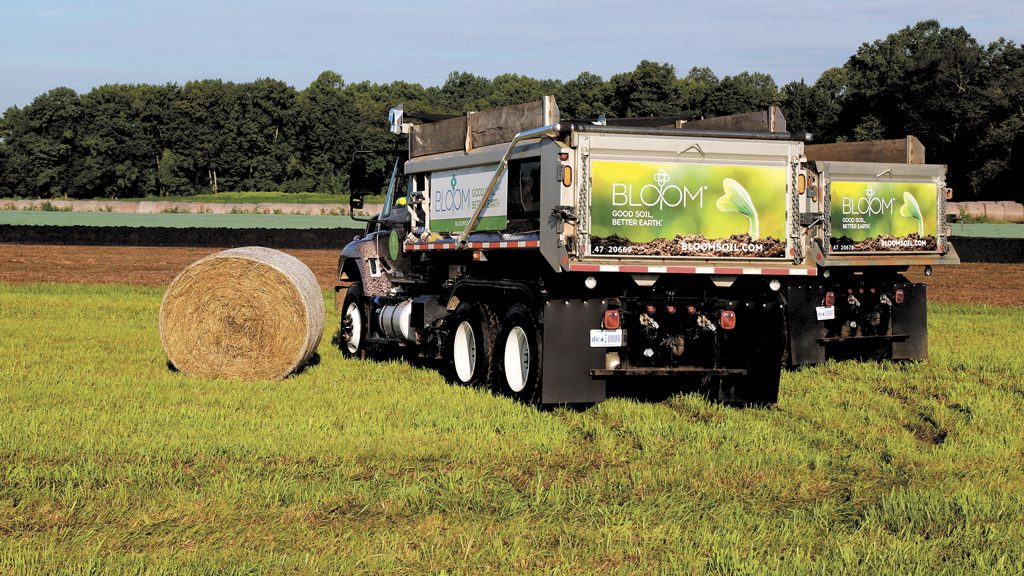Would you pay to pump raw sewage through your building? How about buying back your own waste after you flushed it down the toilet?
DC Water thinks you might.
The American utility provides drinking water and wastewater treatment in the District of Columbia and surrounding communities. It is at the forefront of innovative ways to leverage their infrastructure and generate revenues to offset consumer rates.
The point of such innovation and exploration is integral to the continuing trend to position wastewater treatment as a resource to extract minerals and other components from the flow and monetize them — including energy.
DC Water has made several explorations along those lines such as a drinking water filtration system which can be monitored through a smart phone to check filter lifecycle and quality. It trying to license this to other regions and it also plans to retail bio-solids as fertilizers.
One of its projects involves a Vancouver company, SHARC Energy Systems (formerly International Wastewater Systems) which is building heat exchanger system for the utility’s new headquarters being built at their treatment plant.
It’s similar to the pilot project DC Water is working on at the American Geophysical Union’s (AGU) net-zero energy headquarters in Washington.
It’s designed to extract heat in winter and to cool in winter, says Saul Kinter, program manager at DC Water and Blue Drop, the utility’s innovation arm.
In the summer when the outside temperature is 32 C to 35 C, the sewer system is running at about 21 C, while in the winter it runs at about 10 C when the outside temperature is -10 C.
The sewer system is a thermodynamic resource, he says, pointing to a study which showed about 80 per cent of that energy is thermal, 20 per cent is chemical — biogas production — while one per cent is kinetic, from the flow of the system itself.
For Vancouver’s SHARC Energy the DC Water HQ is a showcase project.
“We’re over the moon because this is the first big project in the U.S. which will provide 100 per cent of the heating and cooling,” says Lynn Mueller, founder and president and CEO of SHARC Energy. “We’re guesstimating they’ll offset 300 tonnes a year of CO2.”
The $500,000 installation will provide all heating and cooling for the 150,000 square foot building. Because it’s located on the treatment plant site the abundant flow of sewage provides more than enough thermodynamic exchange.
The plan at the AGU is to connect to the tear-shaped 66-inch by 99-inch combined storm and sanitary sewer which dates back to the late 1800s.
The system is from Huber of Germany and will see a 12 inch or so pipe divert sewage and run it to a settling tank located outside of the building. From there water will be circulated through the building and then returned to the sewer system. It also uses a solar photovoltaic array, radiant cooling system, green wall, direct current power grid and water reclamation as part of its net zero strategy.
However, in the case of the AGU building there’s a huge expense in digging to get access to the sewer main and then tapping into which may not fully offset savings from energy.
“As a promoter of the system I have to say the ROI (return on investment) may not be there,” Kinter says of the pilot. “In winter the building is heated with natural gas and will save maybe 70 to 80 per cent in costs. However, natural gas is fairly inexpensive right now, so the monetary savings won’t be that great.”
In summer, however, while electricity is more expensive than natural gas, the energy savings from the heat exchanger will be probably in the 20 to 25 per cent range, he says, and while that’s substantial in of itself, it will be a while before the costs of installation, operation and maintenance net out.
The pilot is more about demonstration of concept and DC Water isn’t charging for the extraction of energy from its sewer system.
“We’d like to in the future,” he says. “But this may not be worthwhile for individual buildings. What would be more efficient would be district heating systems.”
As such, in locations of urban renewal where there is wholesale development and access to the sewer systems is required, the shared costs and shared energy extraction would make much more sense economically.
At their own new headquarters, there’s a proximity to the plant and the main lines so there isn’t as much of a cost factor. That system is from SHARC Energy which installed a similar system at the Vancouver 2010 Winter Olympics Village.
Both the ACU and DC Water HQ are expected to be up and running by this summer.
The quest for innovation often takes the form or refining existing models and a case in point is Blue Drop’s Bloom, the resulting bio-solids discharged at the end of the treatment cycle.
While many municipalities sell or provide them as fertilizer in bulk, Blue Drop is looking at marketing them on a much more local and intimate level.
Alan Heymann, chief marketing officer at DC Water, says while the utility doesn’t make big money from sales at $10 a tonne, it offsets costs of $45 a tonne to have the bio-solids picked up and disposed of.
With the system generating 450 tonnes a day, those savings adds up.
The Class A fertilizer is 30 per cent solids giving it a cakey texture when sold in bulk. However, the plan now is to package it in smaller bags at 40 per cent solids and retail it through area garden centres as an alternative to sheep or cow manure.
“There’s a consistent supply, the price doesn’t change and we think there’s a market around DC and south,” he says but notes there are challenges beyond packaging, distributing and marketing the product branded as Bloom.
“There’s the ick factor which we have to deal with.”



Recent Comments
comments for this post are closed